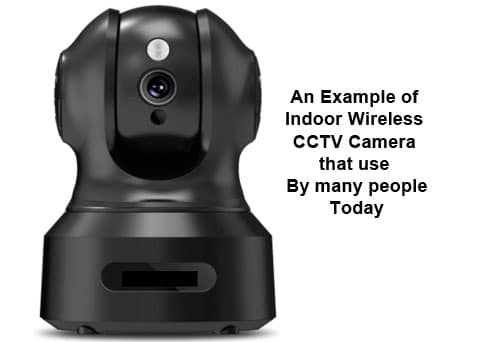What Is CCTV Camera?
What Is CCTV Camera – Closed-circuit television (CCTV), commonly known as video surveillance, is the use of video cameras to send a signal to a specific location, which is then displayed on a limited number of monitors. The transmission is not openly broadcasted, unlike broadcast television, albeit it may use point to point (P2P), point to multipoint (P2MP), or mesh wired or wireless connectivity.
Though practically all video cameras meet this criterion, the phrase is most commonly applied to those used for surveillance in places where security is required, such as bars, banks, casinos, schools, hotels, airports, hospitals, restaurants, military installations, convenience stores, and other places.
Although videotelephony is rarely referred to as “CCTV,” the use of video in distance education, where it is a significant instrument, is frequently referred to as such.
Surveillance Camera
CCTV surveillance of the public is ubiquitous in many parts of the world. Body-worn video cameras, which are mounted on a police officer’s chest or head, have been popular in recent years as a new kind of monitoring, particularly in law enforcement.
Video surveillance has sparked heated debate about how to balance its usage with people’s right to privacy, even while they’re out in public.
CCTV technology can be used in industrial plants to monitor parts of a process from a central control room, for example when the environment is unsuitable for humans. CCTV systems can run continuously or only when necessary to monitor a specific incident.
CCTV system with DVR
Digital video recorders (DVRs) are a more advanced type of CCTV that can record for many years and have a number of quality and performance options as well as supplementary functions (such as motion detection and email alerts).
Some industries mandate the retention of three months or more of recorded video when using CCTV with DVRs. To save the recorded footage, this will necessitate a large amount of hard drive capacity; 60 to 240 GB per camera is a standard storage level these days, and this will likely double in the future.
Standalone IP camera
Decentralized IP cameras, some with megapixel sensors, have lately added the ability to record directly to network-attached storage devices or internal flash for totally stand-alone operation. This camera is commonly used in a small residence, and it records for up to days using micro SD, just like a smartphone. It has a 16 GB micro SD memory.

This can be achieved by recording only scenes with movements. However, the question is it really nothing that happened during un-recorded times?
This is a sample of Wireless Security Camera 1080P Indoor that works with Alexa so you can check certain camera without lifting a finger only by saying “Alexa, show the front door camera”
Indoor vs Outdoor CCTV Camera
There are two types of camera placement locations: indoor and outdoor. An indoor camera usually has a good shape and can be placed within the house, but it is not sturdy enough to be placed outside.
The outdoor CCTV camera, on the other hand, has a sturdy design that will withstand extreme weather.
History of CCTV
In the early 1940s, Walter Brunch invented CCTV, which was then employed by the US military in the testing of the v2 missile. Officials were able to observe the testing at close range without risk, looking for faults and other problems that could have gone undiscovered otherwise.
By the mid-1960s, CCTV was being used to monitor public venues such as train stations and city centers in a few European towns.
By the mid-1980s, outdoor camera technology had improved dramatically with the advancement of heaters and fans to reduce condensation and foggy lenses. During this time, the industry developed the pan and tilt features of the cameras, or what is known as PTZ cameras, which were busted during the late 1990s.
After 9/11, the market boomed with sales of systems with infrared and high-resolution lenses, allowing cameras to be installed in police cars, traffic signals, and nearly every public building in the country.
New equipment was created that was more vandal-proof and had more advanced facial and license-plate recognition capabilities. On our roads today, CCTV helps to monitor traffic congestion and accidents by alerting authorities when the average speed falls below a preset level or when the number of cars passing in a certain time period exceeds a specific threshold.


![Reconnecting.Error Code HCNetSDK.dll[91] – Hikvision Camera Video Loss Problem Solved! 10 Reconnecting.Error Code HCNetSDK.dll[91] – Hikvision Camera Video Loss Problem Solved!](https://yunarwinardi.com/wp-content/uploads/2016/11/cctv-2417559_640.jpg)



